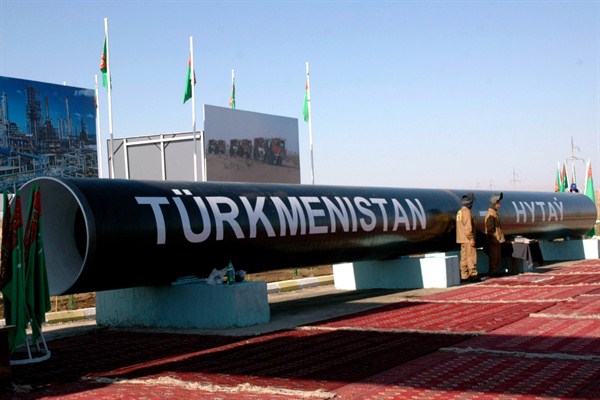Continued attempts at developing a natural gas pipeline linking Central Asian exporters with markets in Europe have fallen apart, leaving the region dependent on exports to either Russia or China. While the United States has helped countries in Central Asia balance geopolitically, some now believe the U.S. will drift from its engagement in the region as part of the Trump administration’s “America First” foreign policy. Last week, Kazakhstan’s president, Nursultan Nazarbayev, became the first Central Asian head of state to visit President Donald Trump in the White House, in a likely effort to shore up ties. In an email interview, Morena Skalamera, an associate at the Geopolitics of Energy Project at Harvard’s Belfer Center, examines the competition over Central Asia’s gas resources and its geopolitical consequences.
WPR: Where does the competition over the past decade between Russia, China and the European Union for Central Asia’s gas reserves currently stand, in terms of signed supply and pipeline deals?
Morena Skalamera: In the two decades following the Soviet Union’s collapse, Russian energy giant Gazprom was in the habit of purchasing gas from landlocked Central Asian countries—gas that could only reach EU energy markets via the old Soviet pipeline network—at very low prices, often not paying in hard currency, and sometimes not paying at all. Gazprom would then sell the same gas for higher prices in Europe. Starting with the Great Recession in 2007, global demand collapsed, and Russia no longer needed imports from Central Asia to meet its contractual obligations in Europe. In April 2009, a suspicious explosion in the main Russia-Turkmenistan pipeline allowed Moscow to cut its annual contractual intake of gas from Turkmenistan from around 50 billion cubic meters, or bcm, to around 10 bcm. It is widely held that Moscow orchestrated the explosion—although conclusive evidence is lacking—in order to suspend Turkmenistan’s natural gas flows at the volumes prescribed by the long-term contract.

